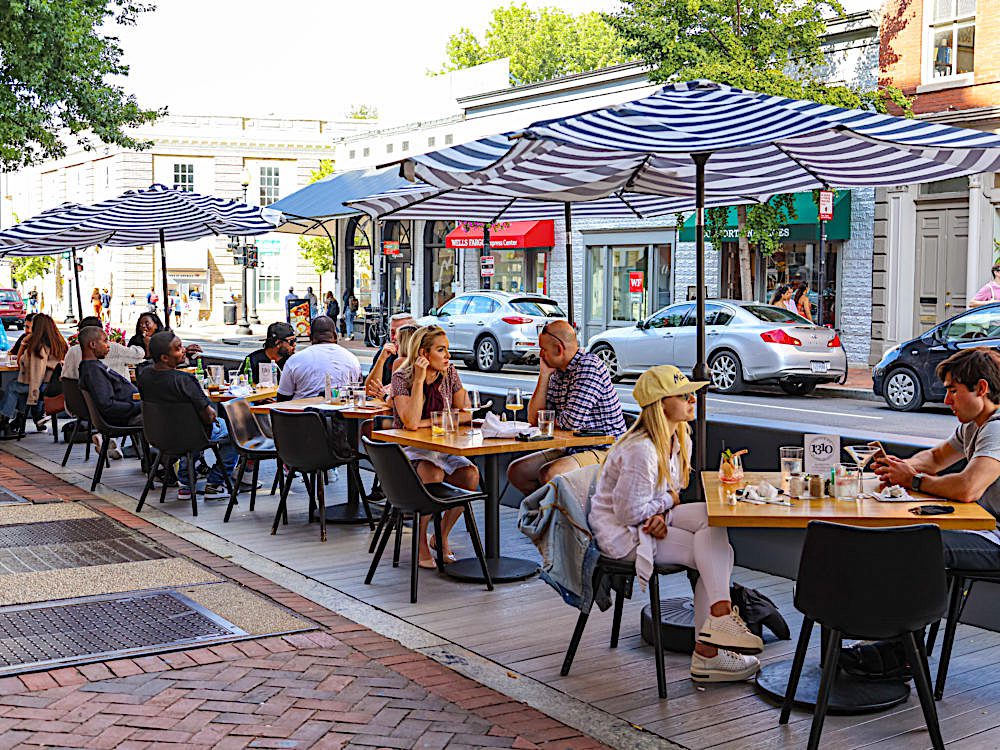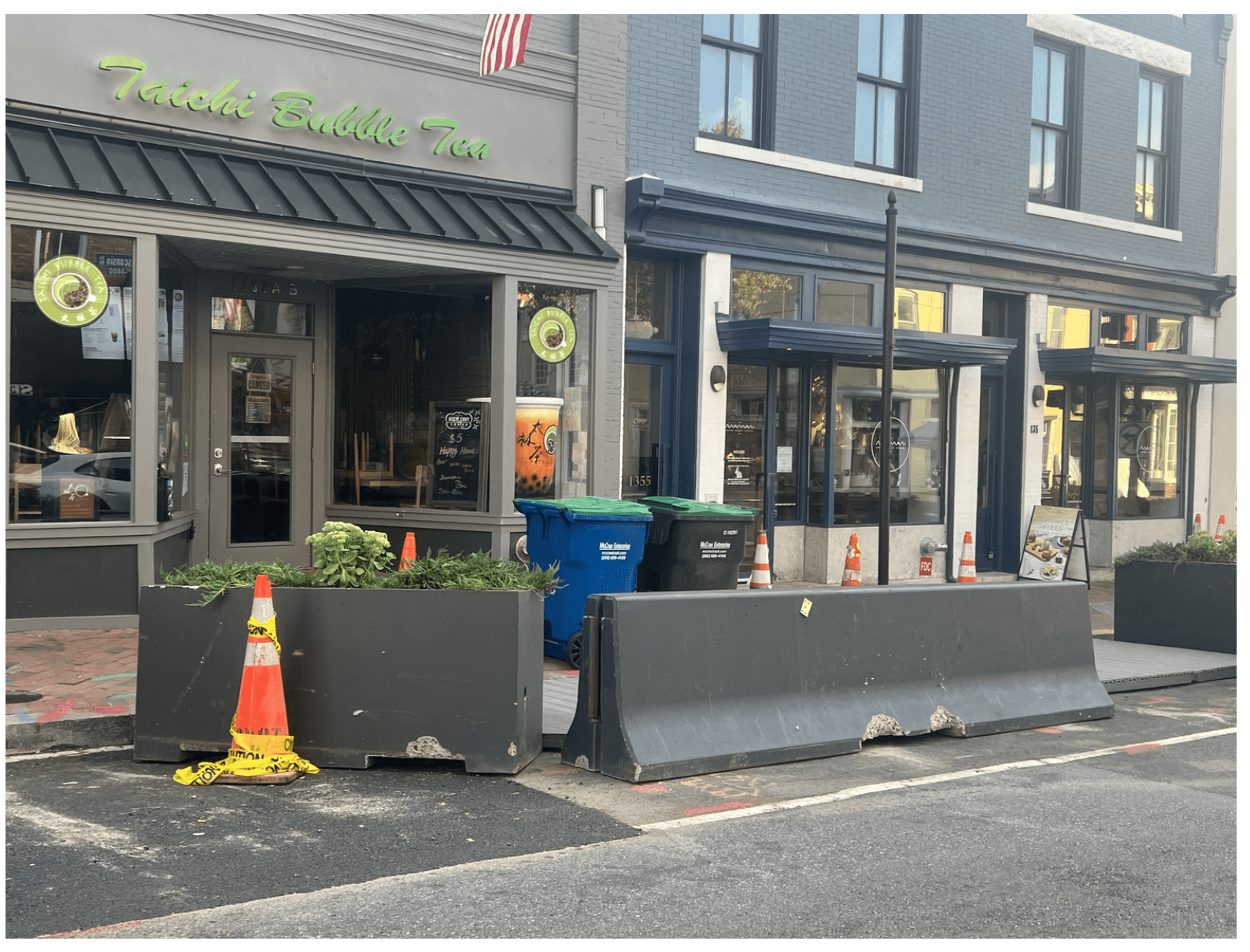The Future of Georgetown’s Streateries
By • November 13, 2024 0 1372

New Proposals Refuel Neighborhood Debate Over Sidewalk Extensions
Five years ago, walking down Georgetown’s brick sidewalks, one might find oneself fighting to squeeze by fellow foot soldiers. Today, however, the neighborhood’s 11.8 million annual visitors may find a clearer path, thanks to the expanded sidewalks accommodating “streatery” structures for outdoor dining.
At an Oct 30 meeting, Faith Broderick, the Georgetown Business Improvement District’s economic development director, heralded the impact of streateries on the neighborhood’s vitality, citing a Washingtonian article headlined, “Is Georgetown Now Actually … Cool?” “The sidewalk extensions brought new life to the streets that otherwise was not there,” she said.
Georgetown’s streateries — on plastic panels that extend the sidewalk into the street — have been a center of debate since they were first installed in response to the pandemic. The District Department of Transportation piloted the citywide Temporary Streateries Program in June of 2020, allowing business owners to apply for a permit to install a streatery outside their establishments. Each business is responsible for its streatery’s upkeep.
However, the BID controls a separate permitting process for Georgetown’s streateries and widened sidewalks, requiring interested businesses to apply through the BID and pay a fee for installation and upkeep. Located along M Street and Wisconsin Avenue, the barrier-bordered streatery areas have been criticized as poorly maintained safety hazards lacking aesthetic appeal.
Elizabeth Miller, president of the Georgetown Coalition for Public Spaces, raised concerns about financial transparency, since the BID has not released any information to the public about how streatery fees are managed. “We don’t know how the money is being collected, we don’t know how it’s being spent, we just don’t know,” she said.
And Georgetown faces an additional hurdle in streatery installation: the Old Georgetown Board, which is responsible for maintaining the neighborhood’s historic character and makes the final call on streatery designs.
Miller said the coalition’s concerns include the safety of bikers as they navigate around the streateries, the reduction in parking and the lack of visual appeal, focusing on the Jersey barriers that prevent cars from crashing into pedestrians on the extended sidewalks.
“Jersey barriers have this sort of temporary feeling,” Miller said. “They’re heavy. They feel a little bit like you’ve entered a war zone or something,”

An example of a messy, uninviting streatery. Courtesy Georgetown Coalition for Public Spaces.
DDOT, which plans to turn the pilot into a full-time program, released a proposal for citywide guidelines on Oct 30. The comment period is open until Dec 6, concluding with a Public Spaces Committee Meeting open to the public.
At the Nov. 4 Georgetown-Burleith Advisory Neighborhood Commission meeting, commissioners shared frustration with the comment submission process, which uses an email address that is not on DDOT’s website. “It seems like they’ve already made up their policies,” said Commissioner Daniel Chao.
Commissioners also commented on issues of maintenance, whether roof coverings should be required and if the streateries would be better managed under private permits rather than the BID’s permits.
Commissioner Joe Massaua said that, despite the problems, the streateries have overwhelmingly benefited the city and increased the amount of time visitors stay in the neighborhood. “With the streateries and extended sidewalks and bus lanes, it just makes Georgetown have a strategic plan for pedestrian visitors in the future,” he said.
The Georgetown Coalition for Public Spaces sent a letter, signed by 25 business owners, to the BID and DDOT on Oct 31, highlighting its requests to DDOT.
“If we want this to continue in Georgetown, and I think we do, then we need to do it right with historically appropriate materials and without years and years of Jersey barriers,” said Miller. “And while the long-term plan is being designed and funded, we suggest a compromise of removing all the plastic platforms that are not directly in front of operating restaurants.”
“We had such success during the pandemic with our temporary sidewalk extensions. They created that vibe in Georgetown,” Broderick said at the Oct 30 meeting. “But now we have an opportunity to sort of keep what’s there and build on it and create a public realm that is incredible, that is exquisite and that sort of highlights M Street and Wisconsin Avenue as two of the best retail corridors in the entire city.”

